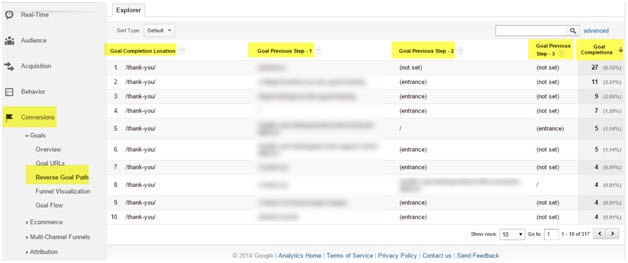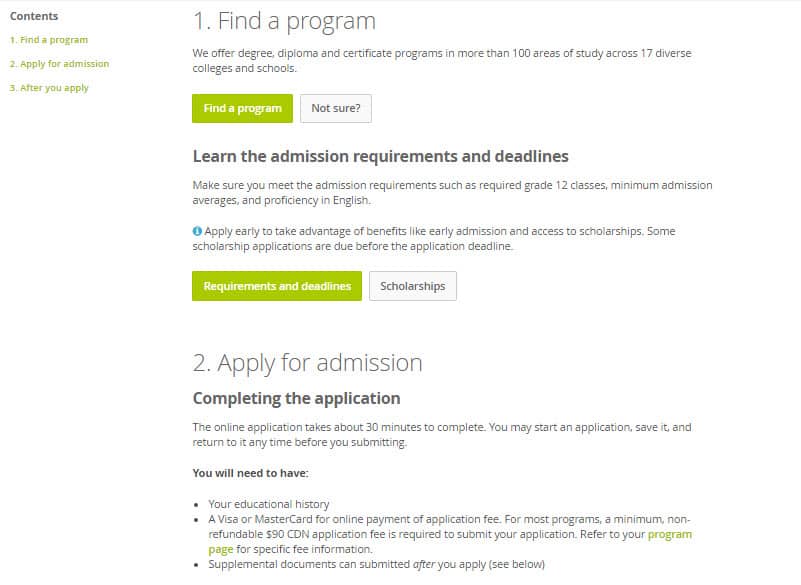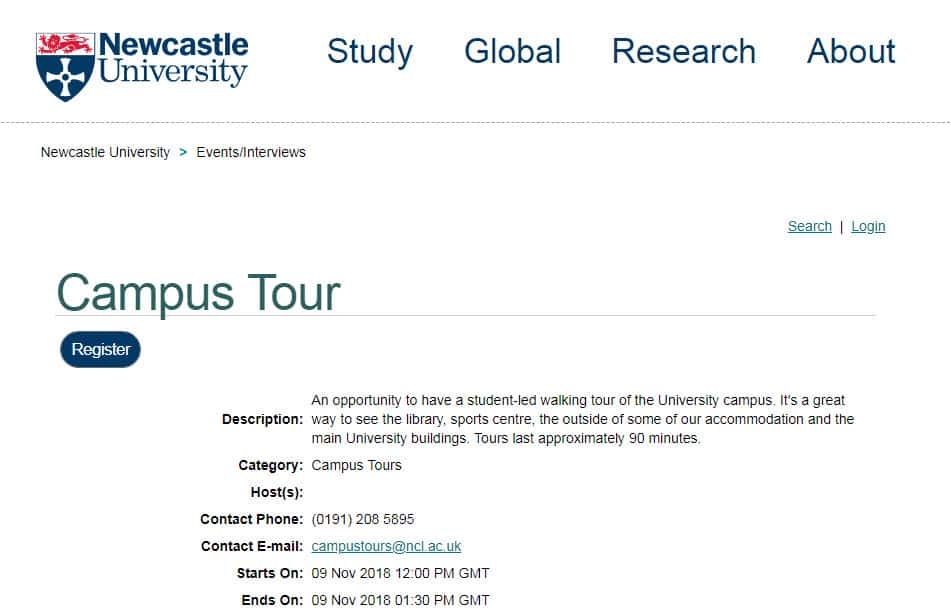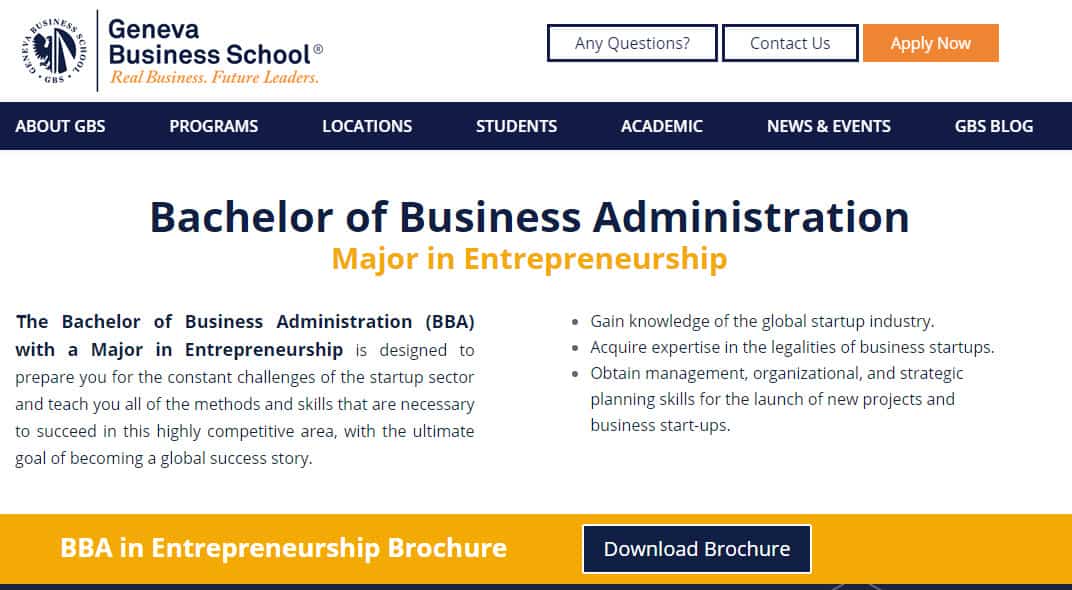
Google Analytics goals can be an invaluable tool for digital marketing professionals. Allowing you to indentify and monitor the online activities that matter most to you, goal tracking can provide actionable insights into both the effectiveness and quality of your website content, design, and functionality.
However, identifying what to track can be tricky for many education professionals, particularly those with limited experience of GA and its capabilities. What actions are truly indicative of success for your school? Should you be monitoring tangible conversions, or focusing more on visibility and awareness? And how can you use the information you get to optimize your website for student recruitment?
While the answers to these questions will vary depending on your specific objectives, there are a number of common features of most school websites which should be tracked using GA goals. Here are a few you might be missing.
Setting GA Goals to Track Requests for Information
At a very basic level, it’s crucial for professionals using Google Analytics in education to ensure their GA goals are configured to properly track lead capture across their website. This means setting goals for any areas where prospective students can provide their information, and categorizing them correctly to ensure you indentify the different kinds of leads you are getting.
Forms leads can fill out to request information are a good starting point. Any prospect doing this is expressing a definite interest in your courses or programs, so measuring how successful you are in attracting these inquiries can be very instructive. While this may seem somewhat elementary, it can be easy to fail to track all of these requests properly, particularly if you embed forms into many different pages across your website.
Example: Oxford College embed an information request form on each of their program pages. In cases like these, it’s crucial to ensure GA goals are configured properly to track submissions from every page.

You should also set up Goals to track prospects who make inquires through your Contact Us page, as well as any subscriptions to mailing lists and newsletters. While these leads usually have less high potential value than those who request specific information, they may still be interested prospects, and will often be planning to follow up with your school at a later date.
The best way to track these goals in GA is to set up a destination goal. This involves creating a specific thank you page that the user is directed to after completing the form, and then triggering the goal whenever this page is reached. Schools have the option of creating a single goal for any page the form is on, or to use the funnel option to create unique goals for different pages.

Tracking these submissions will help you to better understand how well your website is driving conversion. For instance, analyzing the Reverse Goal Path report in GA will show you what pages leads are visiting prior to completing these goals.

Other insights can also be gleaned by looking at the quality of leads being attracted through each form, and using any additional information and reports from your CRM and marketing automation systems to further illuminate the lead capture process.
Set up Goals to Monitor Your School’s Online Applications
In addition to researching your school online, many students will also opt to apply for your courses through your website, either directly or after a period of research, and it can be valuable to use GA goals to monitor your success in this area.
Setting goals to track completed applications can be particularly useful as the process for many schools can be quite elaborate. Measuring your success can help you to pinpoint any area where you might be able to simplify the process or make it clearer for potential applicants.
Using Google Analytics, you can set destination goals for fully completed forms. You can then analyze your data to see not only how many applications are being completed, but how many users land on the form and fail to complete it, as well as where in the process they are dropping out. You may even find it useful to create separate GA goals for the completion of certain parts of the process, such as the creation of an applicant profile or user account if one is required.
Example: The University of British Columbia requires users to create an account in order to complete their online application form. Creating goals tracking both account creations and completed applications could be very useful for the school.

This can help you refine your process to make it more user-friendly. For example, you might find that applicants are frequently stopping when asked for a piece of information they may not have readily to hand (like some personal information or credit card details), and make the process simpler for students by specifying what they need to complete the application before they begin.
Example: The University of Saskatchewan provides potential applicants with a step-by-step guide – including a checklist of what they will need – before applying. Offering this kind of information might be a good way to simplify the application process if you find that you are not receiving many completed applications.

Likewise, you can use your GA analysis to pinpoint parts of your application process that might be overcomplicated, overlong, or unnecessary and refine them to make them more appealing to students. For instance, perhaps there is a series of questions you would like the answers to, but don’t necessarily need, and may be able to remove or edit in order to improve your results.
Using Google Analytics to Track Registrations for Key Conversion Events
While prospective students increasingly do much of their research online, physical visits to your school or campus are still important conversion events. Campus tours, open days, or sample lectures and seminars allow prospects to finally see your institution in the flesh, and may be the final push they need to make an application.
With that in mind, it’s important to use your website and other digital channels to promote these events as much as possible, and setting goals for registrations will give you an indication of how well your school is doing this.
Example: Newcastle University offer the opportunity to register for campus tours online. Tracking these registrations as GA Goals is a must for schools.

A properly tracked GA goal on your signup page will allow you to analyze how many prospective students are registering and what channels they are coming from, and can help you refine and improve your event promotions to make them more enticing. Tracking this data will also help you identify events that aren’t attracting high numbers early so that you can ramp up your promotional efforts to attract more attendees.
Setting Google Analytics Goals for Virtual Student Recruitment Events
In addition to physical events, many institutions will use their websites to offer virtual versions of these experiences. Whether its livestreamed campus tours, webinars for prospective students, or exclusive online lectures, the internet offers a number of ways to simulate an on-campus experience for prospective students from the comfort of their own home. As with physical events, tracking the success of these offers is crucial to determining their value to your school’s lead generation strategy.
Example: Lancaster University offers a Virtual Open Day on its website, which made up a series of videos shot around campus.

When creating goals for online events, it may be useful to not only track the amount of leads who sign up, but also their level of engagement with the material. For instance, if you are offering a video tour or lecture, it could be worth creating an event goal to determine how many students are watching it all the way through. This will give you an idea of how engaging the material you are producing is, and ultimately how helpful it is with your recruitment efforts.
Set up Goals to Track Any Downloads on Your School’s Website
Another important goal to track in Google Analytics for education professionals is any downloads of particular assets on your website by prospective students. Your school may offer brochures, student handbooks, whitepapers, or even eBooks as complementary content, all of which can play an important role in nurturing potential applicants towards conversion.
Using Event Goals to monitor these downloads can be a good way to evaluate just how appealing they are to your audience. This can be especially important if you don’t require web users to fill out any forms or otherwise offer information in order to access these assets.
Example: Geneva Business School offers direct downloads of course brochures on all of its program pages. Setting up GA goals to monitor the amount of times assets like this are downloaded will tell you how useful they are in your student recruitment initiatives.

If your GA reports reveal that certain material is being downloaded a lot, it’s a sign that is playing the role you want it to in your recruitment strategy. If it isn’t, it doesn’t necessarily mean that it’s not useful or relevant to prospective students. It may just mean you need to highlight what’s on offer better, perhaps by making it more visible or using a more enticing CTA to encourage prospective students to check it out.
The Role of Visit and Duration Goals in Google Analytics for Education
While usually much less instructive than goals which track more concrete actions like form completions and downloads, page visits and visit duration goals can still play an important supplementary role in Google Analytics for higher education.
These goals give you a broad sense on how generally engaging your site is for all visitors, regardless of their overall intent or level of interest. Page visit goals are triggered when users visit a certain number of pages before leaving your site, which can be extremely telling if you are trying to determine how well your site holds the attention of your audience, or how navigable it is. Setting specific page visit goals and aiming to improve the amount of unique visitors who exceed them can be a good benchmark to help you improve UX.
Likewise, visit duration goals allow you to set targets for the amount of time users spend on specific pages. This can be a great way to determine just how valuable certain long-form content is, for example, by measuring just how many users are taking the time to read it. It can also help you identify particularly engaging pages on your site, which might enable your school to spot opportunities to further your lead generation efforts.
These goals are just the tip of the iceberg of what you could track on your website using Google Analytics. Your school is likely to have a number of particular actions and objectives it may want to gain insight about, such as paid advertising efforts on search engines and social media, the success of specific campaigns and initiatives, and engagement with certain strategic content. By carefully considering your school’s unique recruitment strategies and initiatives, and setting goals around their most pertinent outcomes, you can ensure that Google Analytics provides you with a truly illustrative picture of your success.







